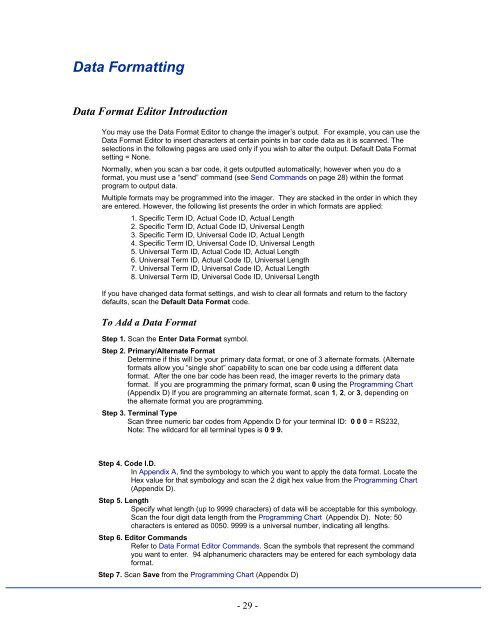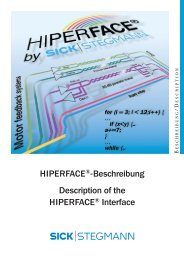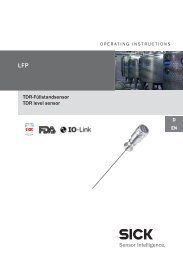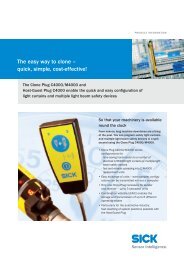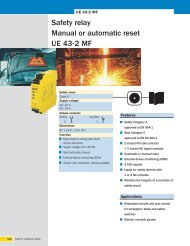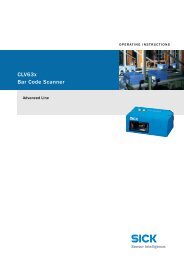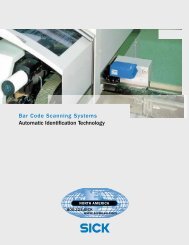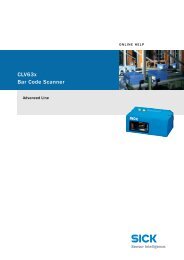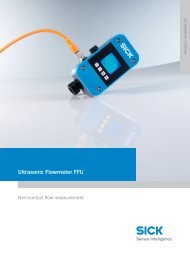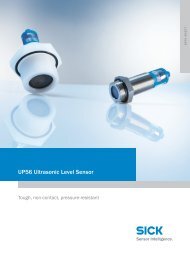ICR 803 Bar Code Scanner BAR CODE MANUAL
ICR 803 Bar Code Scanner BAR CODE MANUAL
ICR 803 Bar Code Scanner BAR CODE MANUAL
You also want an ePaper? Increase the reach of your titles
YUMPU automatically turns print PDFs into web optimized ePapers that Google loves.
Data Formatting<br />
Data Format Editor Introduction<br />
You may use the Data Format Editor to change the imager’s output. For example, you can use the<br />
Data Format Editor to insert characters at certain points in bar code data as it is scanned. The<br />
selections in the following pages are used only if you wish to alter the output. Default Data Format<br />
setting = None.<br />
Normally, when you scan a bar code, it gets outputted automatically; however when you do a<br />
format, you must use a “send” command (see Send Commands on page 28) within the format<br />
program to output data.<br />
Multiple formats may be programmed into the imager. They are stacked in the order in which they<br />
are entered. However, the following list presents the order in which formats are applied:<br />
1. Specific Term ID, Actual <strong>Code</strong> ID, Actual Length<br />
2. Specific Term ID, Actual <strong>Code</strong> ID, Universal Length<br />
3. Specific Term ID, Universal <strong>Code</strong> ID, Actual Length<br />
4. Specific Term ID, Universal <strong>Code</strong> ID, Universal Length<br />
5. Universal Term ID, Actual <strong>Code</strong> ID, Actual Length<br />
6. Universal Term ID, Actual <strong>Code</strong> ID, Universal Length<br />
7. Universal Term ID, Universal <strong>Code</strong> ID, Actual Length<br />
8. Universal Term ID, Universal <strong>Code</strong> ID, Universal Length<br />
If you have changed data format settings, and wish to clear all formats and return to the factory<br />
defaults, scan the Default Data Format code.<br />
To Add a Data Format<br />
Step 1. Scan the Enter Data Format symbol.<br />
Step 2. Primary/Alternate Format<br />
Determine if this will be your primary data format, or one of 3 alternate formats. (Alternate<br />
formats allow you “single shot” capability to scan one bar code using a different data<br />
format. After the one bar code has been read, the imager reverts to the primary data<br />
format. If you are programming the primary format, scan 0 using the Programming Chart<br />
(Appendix D) If you are programming an alternate format, scan 1, 2, or 3, depending on<br />
the alternate format you are programming.<br />
Step 3. Terminal Type<br />
Scan three numeric bar codes from Appendix D for your terminal ID: 0 0 0 = RS232,<br />
Note: The wildcard for all terminal types is 0 9 9.<br />
Step 4. <strong>Code</strong> I.D.<br />
In Appendix A, find the symbology to which you want to apply the data format. Locate the<br />
Hex value for that symbology and scan the 2 digit hex value from the Programming Chart<br />
(Appendix D).<br />
Step 5. Length<br />
Specify what length (up to 9999 characters) of data will be acceptable for this symbology.<br />
Scan the four digit data length from the Programming Chart (Appendix D). Note: 50<br />
characters is entered as 0050. 9999 is a universal number, indicating all lengths.<br />
Step 6. Editor Commands<br />
Refer to Data Format Editor Commands. Scan the symbols that represent the command<br />
you want to enter. 94 alphanumeric characters may be entered for each symbology data<br />
format.<br />
Step 7. Scan Save from the Programming Chart (Appendix D)<br />
- 29 -


